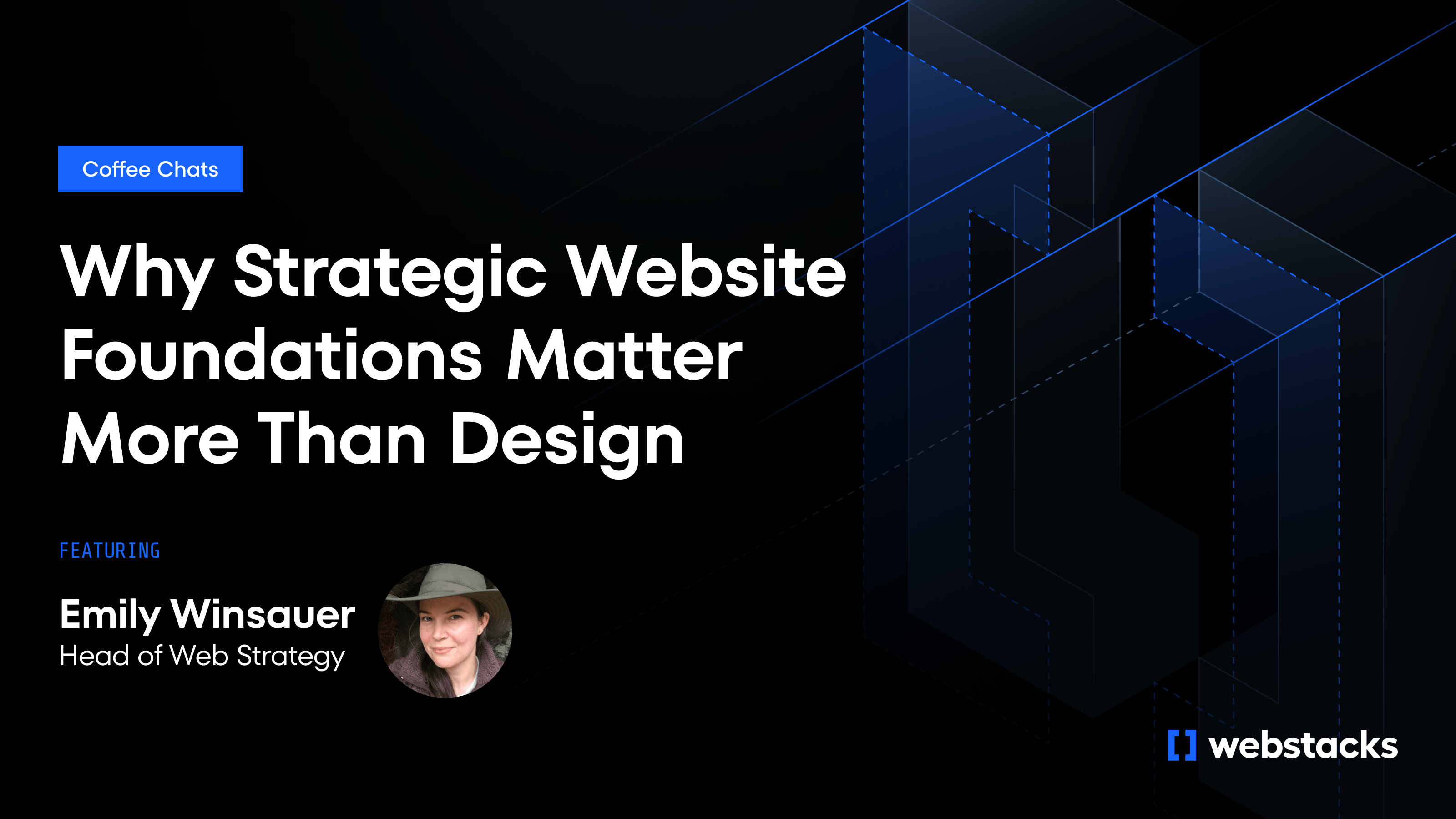Web3 branding is about building transparent, collaborative relationships between a company and its community. It’s powered by blockchain technology. And it shifts control from the brand to the network, inviting users to co-create, contribute, and even own part of the brand experience.
This model is exciting, but it’s not always easy to pull off. Especially for B2B companies used to traditional marketing playbooks. How do you stay true to Web3’s values of openness and decentralization while still driving growth and hitting business goals?
That’s where the right strategy and the right partners come in. Agencies like Webstacks help bridge the gap between Web3 ideals and practical execution. We bring structure, scalability, and smart design to decentralized projects.
Here are 8 practical tips to help you build a Web3 brand that’s authentic, community-driven, and built to last.

1. Establish a Clear Web3 Branding Vision Aligned with Business Objectives
The first step is identifying how Web3 technologies can solve real problems or unlock new opportunities in your business.
For B2B companies, that means asking: How can blockchain make our products better, our processes more efficient, or our brand more trusted?
Set clear goals from the start. Some metrics to track:
- Growth of your on-chain or community audience
- Engagement across decentralized platforms (e.g., DAOs, token-gated forums)
- Token adoption and utility
- Impact on core business KPIs: sales, retention, product usage
IBM is a good example. They use blockchain to increase transparency in supply chains, not just for the tech’s sake, but to improve trust and operational efficiency.
And when it comes to building out your Web3 presence, don’t bolt it on. A composable architecture helps you integrate Web3 tools with your existing systems so you can scale up as the ecosystem matures.
Circle took this approach when redesigning their marketing site. They partnered with Webstacks to create a scalable, modular system that supports their role in the evolving blockchain ecosystem. Without losing sight of performance, brand consistency, or business impact.
2. Prioritize Community Building and Engagement
In Web3, your community is your brand. Unlike traditional marketing, where messaging flows one way, Web3 communities thrive on participation, ownership, and transparency.
The more your users feel like they have a voice and a stake, the more invested they become in your success. That turns customers into collaborators, and products into movements.
To build active Web3 branding communities, try these approaches:
- Token-based incentives: Reward participation with tokens that have real utility.
- Governance mechanisms: Let token holders vote on key decisions.Transparent decision-making: Make processes and outcomes visible on-chain.
You can also use crypto influencer marketing to further boost community engagement and awareness.
3. Reimagine Loyalty and Access with NFTs
NFTs had a massive hype wave a few years ago. And while the speculation has cooled, the core technology remains valuable for brands. In Web3, NFTs are tools for creating ownership, access, and engagement.
These tokens can create true digital ownership and exclusive experiences. Unlike point systems that live in company databases, NFTs offer verifiable, tradeable, and unique rewards.
For example, B2B brands can issue NFT-based credentials for client certifications or create tokenized access to invite-only communities or executive roundtables. You can also use NFTs as proof of participation for events, product feedback sessions, or early betas.
3. Embrace Co-Creation
Web3 makes it easier to involve your audience in shaping your brand. Through tokenization and DAOs, users can help decide how products evolve and how the brand grows. This kind of input leads to better outcomes and builds stronger loyalty.
B2B companies can apply co-creation in a few practical ways:
- Private DAOs: Invite key clients into a closed group to give feedback and influence your roadmap.
- NFT-gated communities: Create spaces where token holders help design features or make strategic decisions.
- Token-based voting: Let clients use tokens to vote on feature requests or set development priorities.
Co-creation shifts your brand from vendor to partner. It improves product-market fit and gives clients a stake in your success.

4. Use Immersive Tech to Deliver Real Value
Augmented reality (AR), virtual reality (VR), and dynamic digital identities are tools that help B2B brands and websites stand out and simplify complex ideas.
AR lets you bring products to life. Instead of handing over PDFs or slide decks, you can let clients visualize a product in their own space. They can do so on their desk, in their warehouse, or on their shop floor. That’s a huge advantage for companies with technical or physical offerings.
VR adds another layer. It’s already being used for virtual demos, onboarding, and training. No travel required, no physical setup, just a controlled, immersive environment where your team and your clients can interact.
5. Implement Web3 Branding Pilot Projects to Test and Learn
Start small in Web3 branding. Small-scale projects help assess impact and feasibility before committing to full implementation.
B2B companies entering Web3 branding might try these pilot ideas:
- Limited NFT releases for key clients
- Small-scale token incentives for customer engagement
These pilots serve as low-risk entry points, generating data to inform your broader Web3 branding strategy. When running pilots, remember:
- Set clear success metrics
- Be prepared to pivot
- Limit scope and duration
- Engage a subset of your audience to get feedback
Typically, organizations that take an iterative approach to new technology are more likely to achieve success.
Webstacks' web design and branding approach aligns perfectly with this iterative development. We favor composable website architecture, which lets you quickly implement, test, and refine Web3 branding features without disrupting your existing digital presence.

6. Use Blockchain to Build Transparency and Trust
Blockchain is a powerful tool for proving that your brand does what it says.
For B2B companies, trust is everything. Blockchain gives you a way to back it up with facts, not promises. Every action is recorded, timestamped, and tamper-proof.
Here’s how companies are using it in real ways:
- Project transparency: Log milestones and deliverables on-chain so clients can track progress without relying on updates or status reports.
- Smart contracts: Automate payments when specific benchmarks are met, giving both sides clarity and accountability.
- Proof-backed marketing: Record case studies or testimonials on blockchain to show potential clients verifiable outcomes.
This level of transparency sets the right tone with modern buyers, especially younger teams who are quick to question claims.
7. Collaborate with Agencies Experienced in Web3
Web3 branding requires a unique mix of technical knowledge and strategic thinking.
Rather than building all capabilities in-house, partnering with specialized Web3 agencies can give you a head start with access to diverse skills:
- Deep knowledge of blockchain technologies
- Expertise in community management
- Understanding of decentralized governance
- Experience with token economics and NFTs
At Webstacks, we help Web3 companies create modular web experiences that support both traditional marketing needs and decentralized technologies.
Unlike agencies that just use headless CMSs and claim to be "composable”, we build true component-based systems that give your marketing team control.
Build Your Web3 Branding Strategy
Web3 branding demands rethinking how you connect with your audience.
While Web3 offers exciting possibilities, the fast-moving nature of these technologies requires an agile, experimental mindset. This is where partners like Webstacks add value. We see websites as business infrastructure and build modular systems that allow your team to evolve brand, messaging, and web performance together.
As you apply these strategies to your business, remember that the future of branding in Web3 is about embracing co-creation, transparency, and community value in addition to the new technologies. Master this shift, and you'll thrive.




